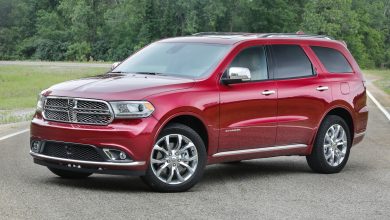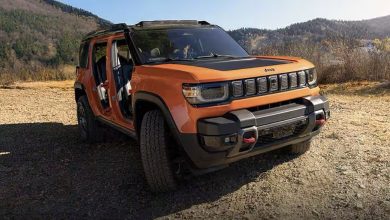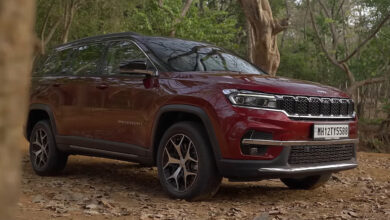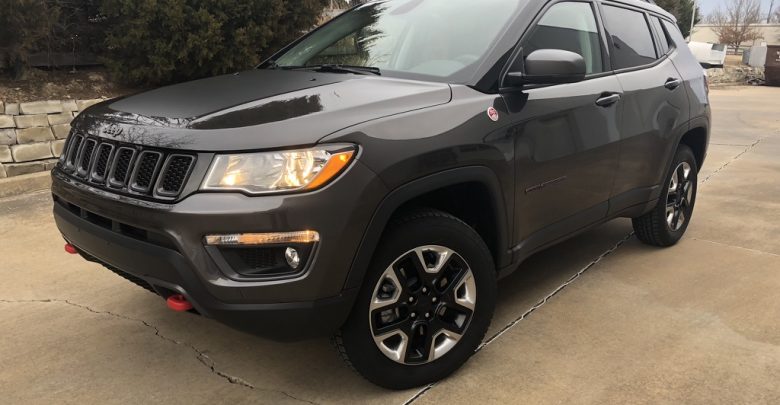
The first-generation Jeep Compass could be seen as the brand’s Achilles heel. The weak spot. The ugly duckling. When the first generation Compass arrived, it was universally derided for its poor capability, unimpressive design, and low quality. It was also the only Jeep that didn’t carry the “Trail Rated” badge, so it became the poster child of cost-cutting and sacrificing Jeep ideals in order to appeal to more customers and meet fuel economy goals
Jeep knew about these issues and attempted to remedy them with a 2011 refresh. The 2011 refresh consisted of a Grand Cherokee-inspired front end (cool fact: the headlight assembly from the Grand Cherokee were the same ones used in the Compass refresh), an updated interior, and an off road package to increase capability. While this refresh worked wonders for the front end style of the Compass, Jeep knew that they needed to step up their game if they wanted to make the Compass competitive rather than just mediocre, though it was actually still achieving surprisingly high sales numbers. Enter the all new Compass.
The 2017 Compass was introduced and actually sold alongside the older, first-generation 2017 Compass for a short period before replacing it entirely in 2018. The new Compass brings a host of improvements over its predecessor: an all new design, new architecture shared with the smaller Renegade, more technology features, better ride and handling, and better fuel efficiency to name only a few. The second-generation Compass also introduced a new model: the Trailhawk. The Trailhawk included improved approach angles by way of a different front fascia, tow hooks, off-road gearing, increased ground clearance, skid plates, and signature Trailhawk accents all over the interior and exterior.
With the new Compass, Jeep indicated they were ready for the now ultra-competitive compact crossover segment.
Exterior
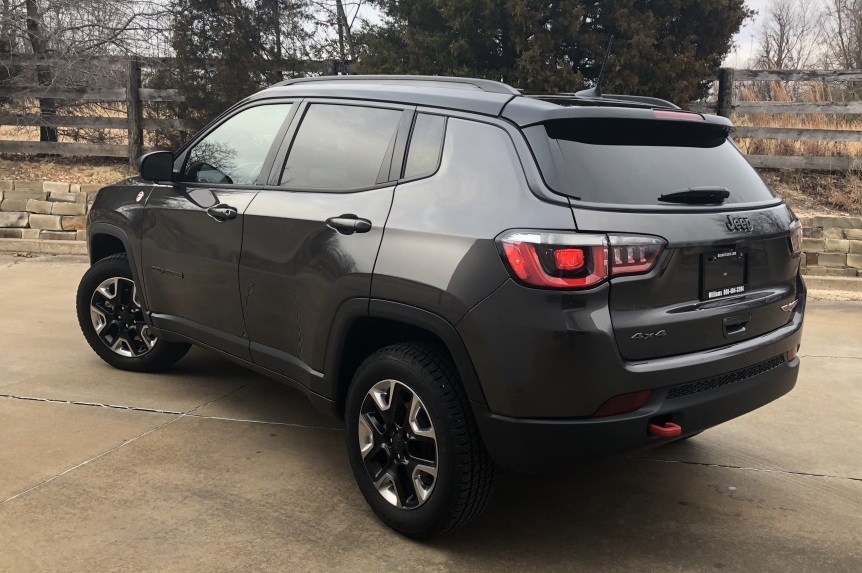
On the exterior, the Compass retains the Grand Cherokee-inspired styling introduced with the 2011 refresh, but refines it to give it a more unique presence. A black roof is available, tied together nicely with accented trim that follows the top of the window line before flowing down the chunky C-pillar and around the liftgate glass.
The Trailhawk model in particular has a menacing look with the matte-gray styling replacing the faux-chrome found on other trim levels. The front fascia on the Trailhawk has a black plastic lower “lip” that does its best impression of a bulldog underbite.
The new Compass is an attractive design, easily rising from one of the most homely designs in its class to one of the best. The Trailhawk’s 8.5 inches of ground clearance gives it a tall, but not gawky stance. From the rear especially, it looks very wide and almost muscular.
Interior
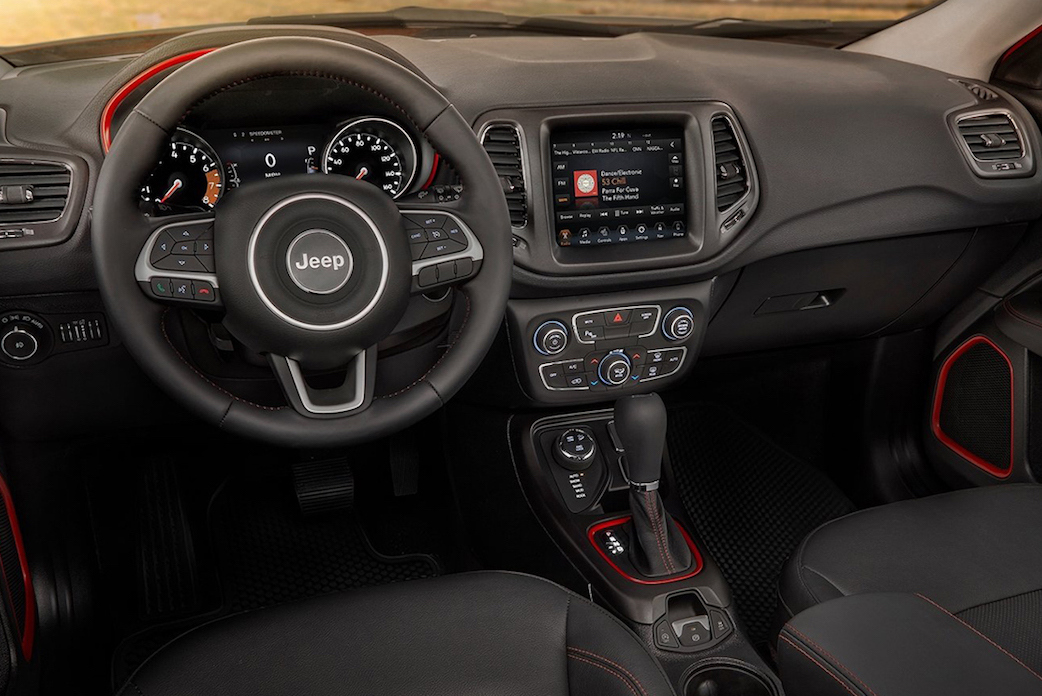
Inside the cabin, customers will find even more improvements. The previous Compass was known for its Tupperware-quality materials, but the new one is several steps forward. Anyone familiar with recent FCA products like the Grand Cherokee, Durango, and Pacifica will recognize the rubberized plastic that dominates the dash. While it isn’t available with a luxurious leather wrapped interior—at least not yet. The new Compass has mostly abandoned its use of hard plastics. All of the interior pieces felt solid, with very little flexing of materials. It feels tightly made.
The design of the center stack, too, will be familiar to anyone who has been inside of a Cherokee or Grand Cherokee. The new Compass has stuck to the Grand Cherokee side of the Jeep family rather than the more utilitarian Wrangler side that influenced the Renegade. Some switchgear is shared with the Renegade, but the design is more similar to that of the Cherokee. The available 8.4″ Uconnect 4C system is framed in a shape that looks very similar to what you’d find in a Cherokee or Grand Cherokee, and the controls are laid out well. Thankfully, physical controls are available for most things, but those looking for physical controls of the heated seats and steering wheel will be disappointed.
The Uconnect 4C system is excellent, with fast response times and a plethora of features to keep everyone entertained. From Apple CarPlay to the climate controls to vehicle settings, almost everything you’re looking for can be found on the Uconnect system, which I will cover in-depth at a later date.
Inside the Compass, there are a lot of red accents to indicate that you have purchased the Trailhawk. The speakers are framed in red bezels, there are red accents around the speedometer, the seats have a red Trailhawk badge and include red stitching. My Compass was equipped with the base sound system which is perfectly acceptable and has good levels of bass without too much distortion, but a Beats sound system with subwoofer is available for those interested in upgrading. Additionally, a panoramic sunroof is available to provide the open-air feeling of being in a Wrangler. This is also a standout feature among the compact crossover segment.
Generally speaking, the interior of the Compass is a nice place to spend time. I am very tall at 6’5 and I had an adequate amount of space in front and found the seats to be comfortable and supportive. I was more impressed by the amount of room available in the rear seats. The seat design itself is pretty thin, which is pleasing to me because thick, chunky seat designs intrude on passenger space. Again, I had an decent amount of legroom in the rear, which is more impressive than it sounds considering my height. Headroom was satisfactory in the front and rear. As with most compact crossovers, though, the middle seat is best reserved for small children or people you want to punish. I also found the rear seats to be more upright than I’d prefer, but I still didn’t have a problem getting comfortable.
Cargo space is competitive in the Compass, exceeding even that of the pre-refresh Cherokee when the rear seats are folded down. I’d been driving a Cherokee Trailhawk for a few days before I drove the Compass, and when I opened the lift gate on the Compass for the first time, I was astounded by the amount of room available. It is easily enough for a couple of people to vacation in with their luggage, especially with one of the rear seats folded down. The Trailhawk gets a nice rubber mat to protect the cargo area from any kind of mud, as its intended buyers are the adventurous, outdoorsy type.
Ride, Handling, and Driving Impressions
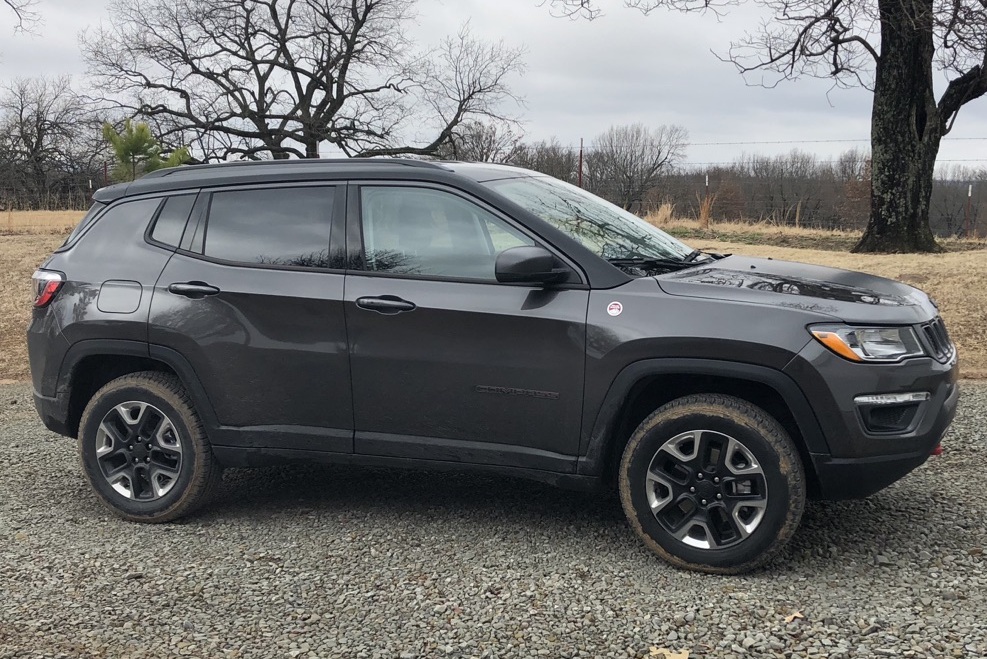
The Compass is equally surprising in regard to its ride quality. I haven’t driven a first generation Compass for an extended period of time, so I can’t compare the ride quality between the two, but I can compare it to the Cherokee Trailhawk. I live on an unpaved country road, so I was surprised at how quiet the Cherokee Trailhawk was going over bumps in the pavement. The Compass fared nearly as well, but has a bit more road noise than the Cherokee. Despite losing to the Cherokee in road noise, the Compass still remained smooth over rough surfaces.
Owing to its Renegade sibling which donated a version of its architecture, the Compass is surprisingly fun to drive. Since it is small, it is easily whipped through corners and tight parking lots. The 2.4-liter Tigershark engine mated to the 9-speed automatic transmission does an “okay” job of propelling the Jeep forward. Many reviews have mentioned how slow it is, but I didn’t find that to be the case. You have to keep in mind that you are buying a heavy, off-road capable crossover that is powered by a 180 horsepower engine. With that in mind, there were no real disappointments. Acceleration is not fast by any means, but as I eluded to, most people shouldn’t feel unsafe. It doesn’t have much power, but it also doesn’t have such a low amount that it feels scary to drive. Passing power is present, but I wouldn’t recommend passing if you don’t have a large opening…at least not until you are confident enough in the powertrain after getting used to it.
So, because of the engine, it doesn’t feel like a hot hatch. It also doesn’t feel like as lumbering as its off-road capability would suggest. Other people who have driven the Compass have made remarks about how fun it is to drive in the corners.
Fuel economy is pretty good, too. The Trailhawk is rated at 22 city/30 highway for a combined average of 25. In my mix of roughly 70% city driving and 30% highway driving, I observed slightly higher than that at an average of 25.5 MPG. This is obviously not a scientific test though, so your mileage may vary. The stop-start system is standard, but thankfully can be turned off. It is more intrusive than the system on the 3.2-liter Cherokee that I tested, and I usually found myself turning it off on the Compass.
I didn’t get the chance to do any kind of extreme off-roading, but I did drive the Compass through a pasture and into the woods just after it rained. It is mind blowing to me that they have managed to engineer such a well-rounded vehicle in handling, comfort, efficiency, and capability. There were no real problems on this mild terrain, but I did find it wanting to get stuck in some deep Oklahoma mud with its stock tires. If anyone is planning to do serious off roading, I’d suggest buying all-terrain tires immediately – the factory tires on the Trailhawk are geared toward highway use. Still though, over hills and ruts and a few small rocks, I felt confident in the Compass Trailhawk’s capability. The ground clearance was good and I never scraped on anything.
Conclusion
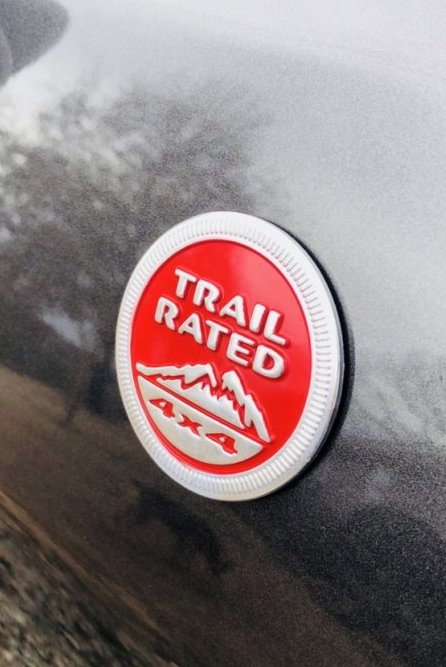
In short, I would recommend the Compass Trailhawk to anyone wanting a nice blend of efficiency, capability, space, and style. The exterior design of the Trailhawk looks menacing, especially with lighter colors due to the matte-gray and red accents and black-painted roof. It stands out from the compact crossover class with a unique blend of capability and design that only a Jeep can provide.
Setting out to erase the experiences of the first-generation Compass, Jeep has excelled at that mission while providing a truly competitive vehicle and creating another example of its engineering and off-roading genius.

